DCE review
1/58
There's no tags or description
Looks like no tags are added yet.
Name | Mastery | Learn | Test | Matching | Spaced |
|---|
No study sessions yet.
59 Terms
What are bubble caps used for?
To prevent flooding, when low vapour flowrates are desired.
What is weeping? What causes it?
Weeping is when liquid drips through plate holes
Caused by too low vapour flowrate (+low liquid surface tension)
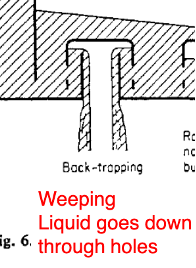
What is flooding? What causes it?
Flooding is when liquid backs up in downcomers and fills up the column.
It is caused by too high a pressure drop resulting from liquid and/or vapour flowrates which are high-very high.
What is entrainment? What causes it?
Entrainment is when droplets of liquid are transported in the vapour stream exiting at the top of the column
It occurs when vapour flowrates are too high. Including extra space for vapour-liquid disengagement helps prevent entrainment.
What is coning? What causes it?
Coning is when vapour pushes through the liquid without bubbling through it, preventing sufficient vapour-liquid contact
It is caused by low liquid flowrates.
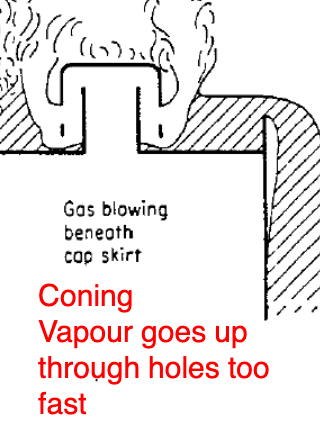
Sketch the ideal operation zone of distillation column based on liquid rate and vapour rate

What are valve trays used for?
To prevent flooding when low vapour flowrates / high turn down ratios are desired. Similar to bubble caps, but with moving pieces.
Researching it, it seems like valve trays are just better at everything.
Single pass plate

Reverse flow plate
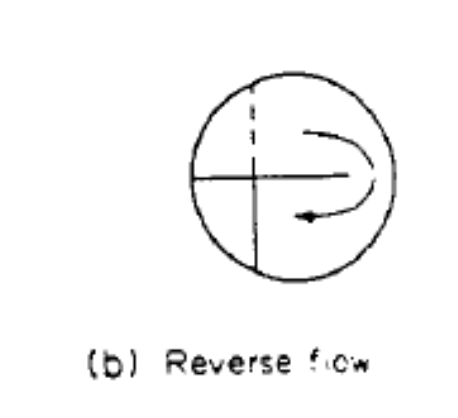
Double pass plate

Available Net Positive Suction Head formula

Apparent pressure at pump entry point (PB)

What is the point of NPSHr?
To account for the fact that pressure drop within the pump may occur before pressure is increased
How to use Bernoulli equation to create system curve
Treat Q as a variable
Evaluate all terms in the EBE as constants or functions of Q
Eventually you will get hp=aQ²+bQ+c
Friction head equation

Friction factor equation

Procedure for when a question says that the amount of component a in the gas stream drops by b%
(100-a)/100 * b in = b out
(100-a)/100 * G (mol/t) * y1(molfrac) = Gs(mol/t) * Y2 (mol ratio)
Gs (mol/t) = G (mol/t) * (1-y1)
(100-a)/100 * Gs (mol/t) * Y1(mol ratio) = Gs(mol/t) * Y2 (mol ratio)
What type of flow in compressors should be avoided and why
Slug flow, because it is not energy efficient

What type of multi-phase flow involves a continuous liquid phase and small dispersed pockets of gas
Bubble flow
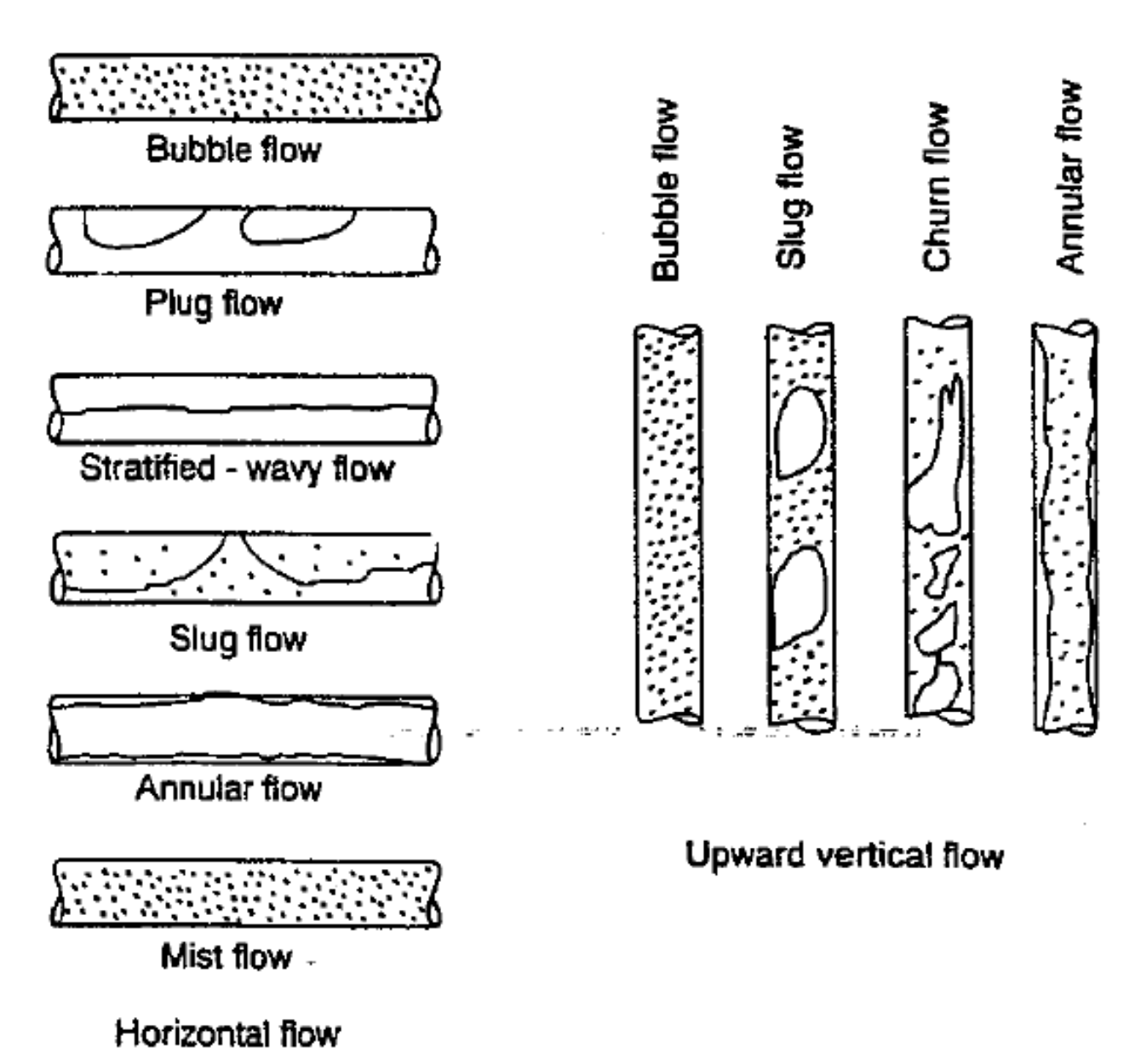
What type of flow involves separate liquid and gas flows
Stratified flow

What type of flow involves a ring of liquid with a central flow of gas
Annular flow
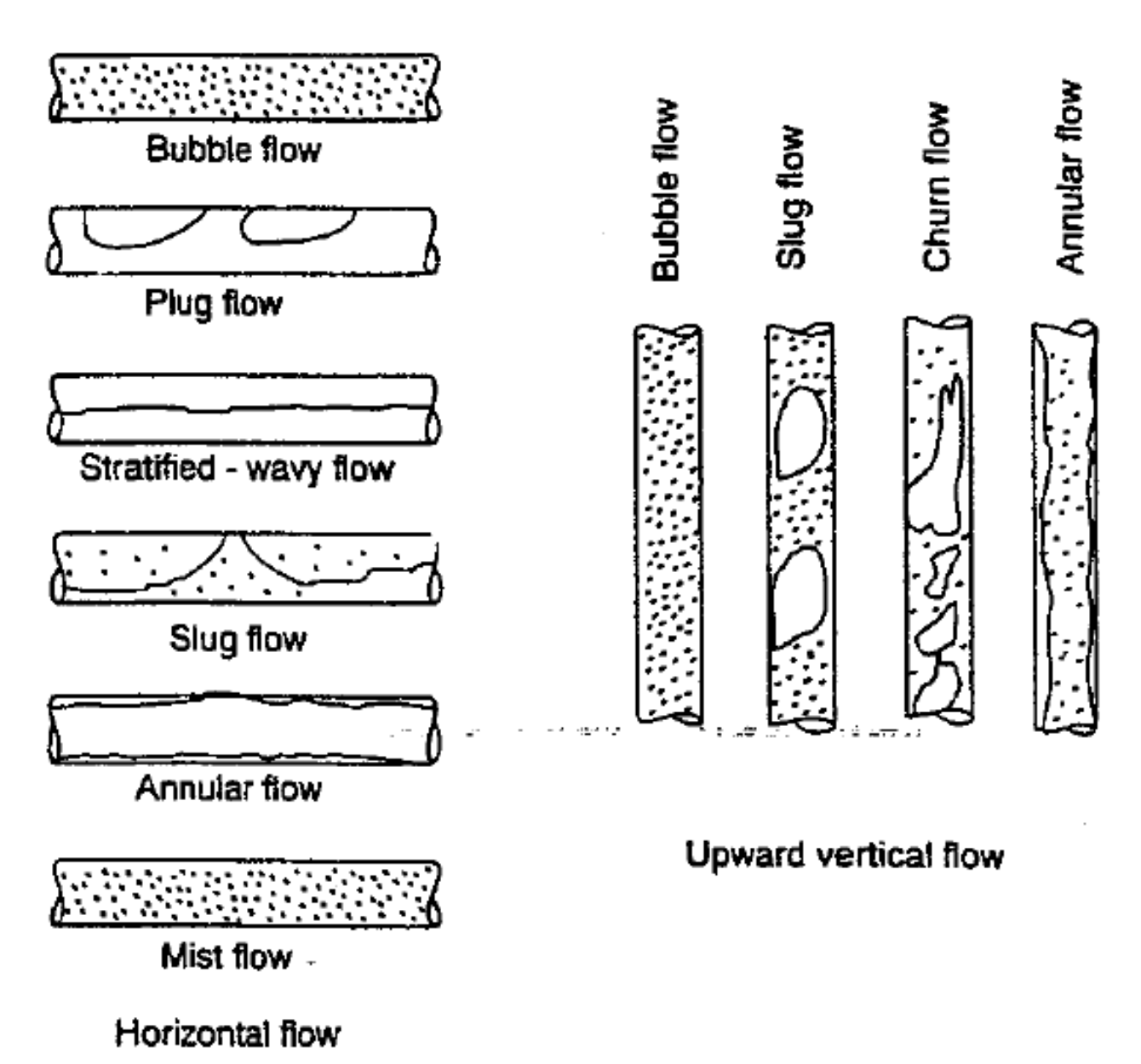
What type of flow involves small pockets of gas forming at the top of the pipe?
Plug flow
What type of flow involves large pockets of gas forming at the top of the pipe?
Slug flow
Ejector
nozzle combined with diffuser. Benefit of no moving parts.
A utility fluid is pushed through the nozzle, dropping its pressure and increasing its velocity. The drop in pressure sucks a process fluid into the ejector, where the fluids mix. They exit through a diffuser which decreases the velocity and increases the pressure of the mixture.
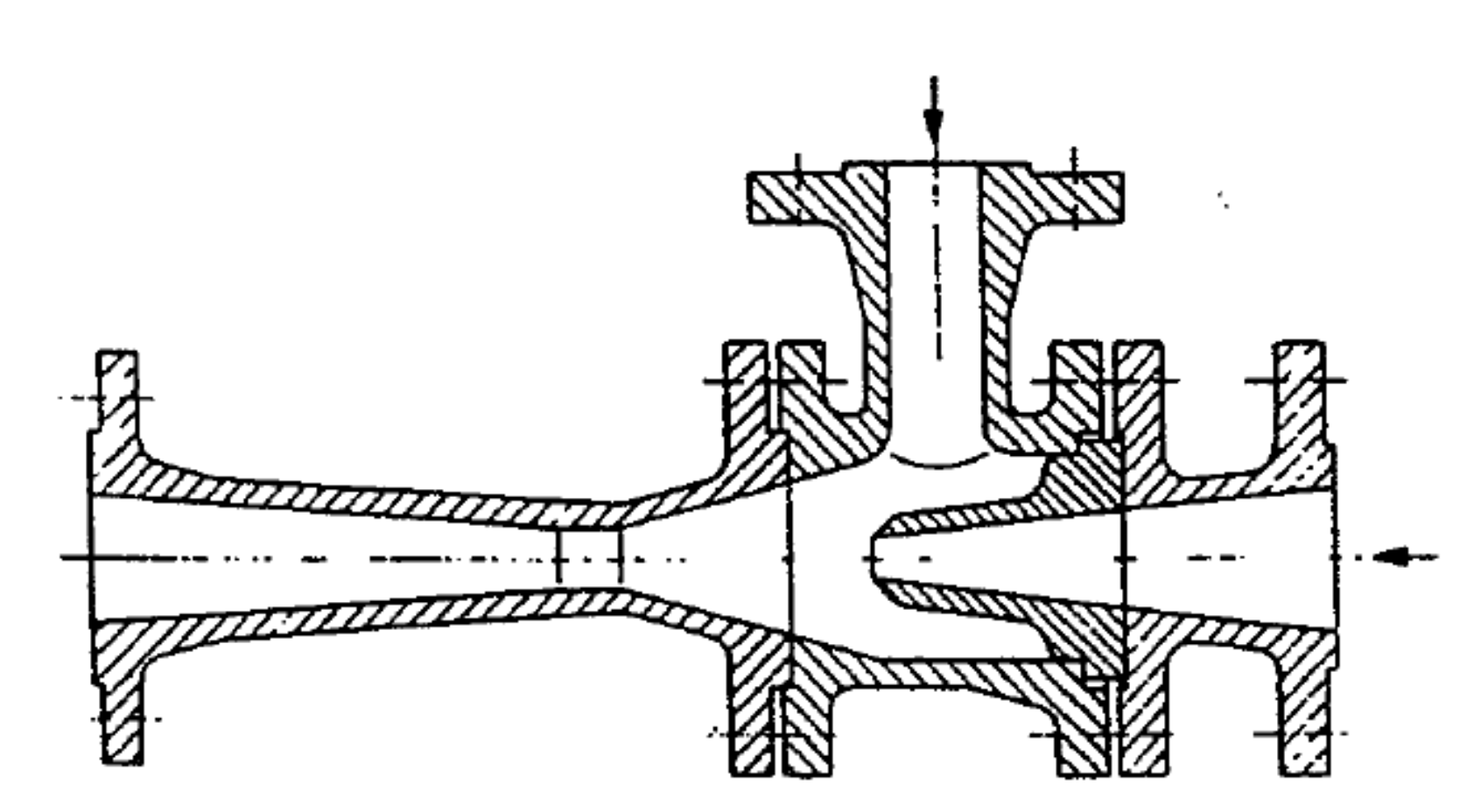
Vacuum pumps
Rotary type
Take in low pressure gas, discharge at atmospheric pressure
Reciprocating piston compressor
Not as reliable as other compressors
Large power consumption
Delivers the highest discharge pressure
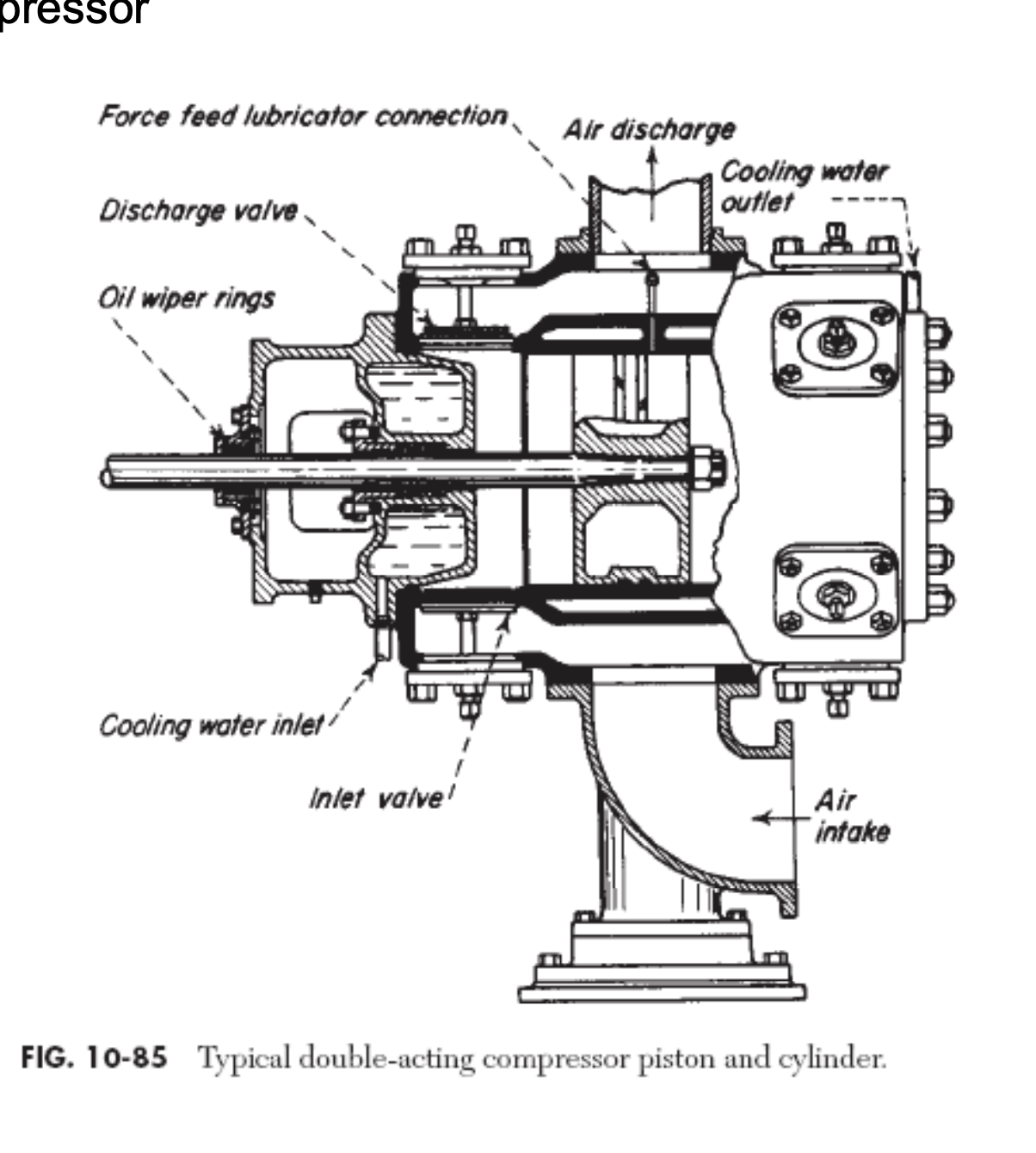
Centrifugal blowers and compressor
Include fans and compression stages
This enables fairly flexible operation
High reliability
Can service wide range of pressures and of flow rates

Axial flow blowers
Provide the highest flowrates
Cannot deliver high discharge pressure
High reliability
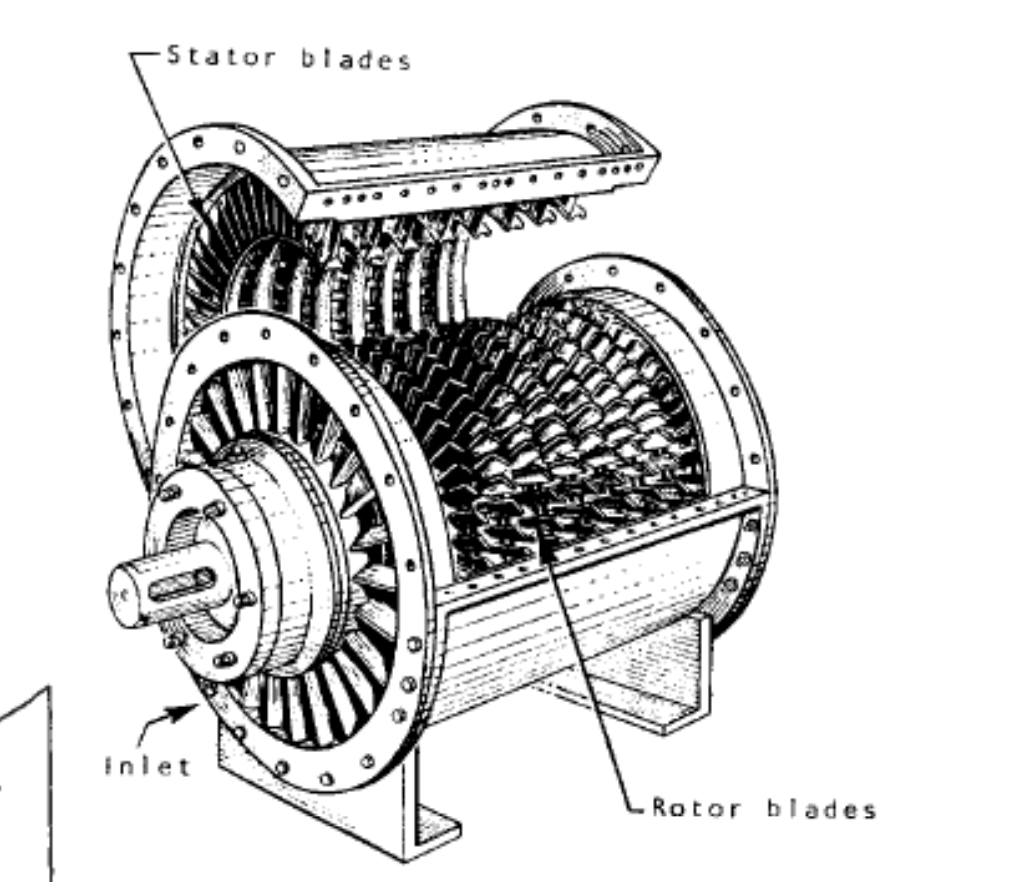
Rotary blowers and compressors
Sliding vane type: Blades move out and in as the rotor spins. Low power, low pressure, low noise
Liquid ring: liquid seal rotates with impeller

Centrifugal pump
Commonly used because simple and low cost
Low maintenance
Versatile: available for vast range of volumetric flowrates and discharge pressure requirements
Radial, axial and mixed flows
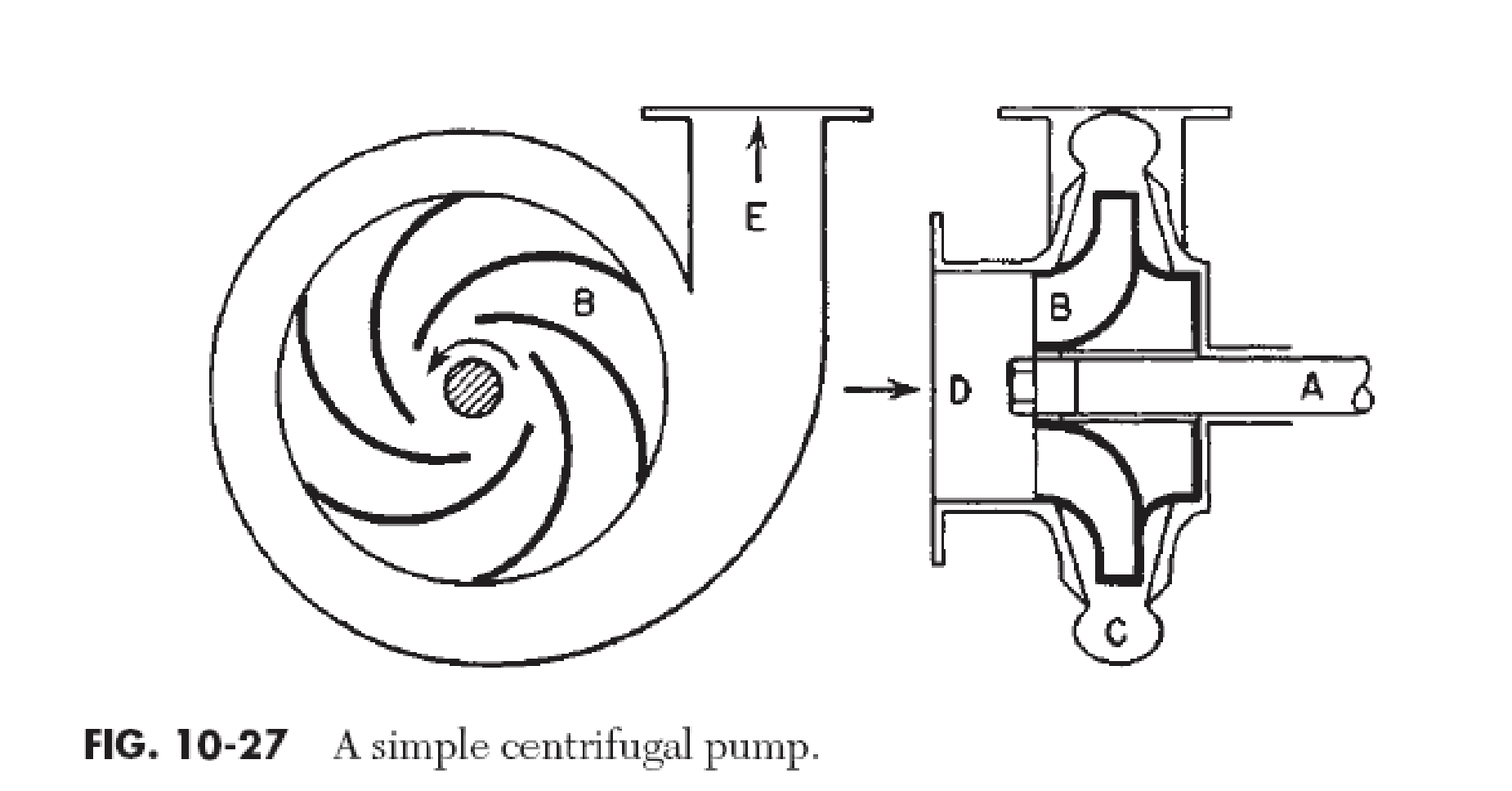
Reciprocating pump
Pistons/plungers used to push liquid through a delivery valve. As piston/plunger retracts liquid is pulled in through a suction valve. Double acting allows constant movement of fluid.
Low-medium vol. flows, with high pump head

Diaphragm pump (reciprocating)
Corrosive liquids or suspended abrasive solids
Diaphragm flexes back and forth drawing in and then pushing out liquids
Diaphragms are made form rubber, teflon, plastic
Low vol flows and medium pump head
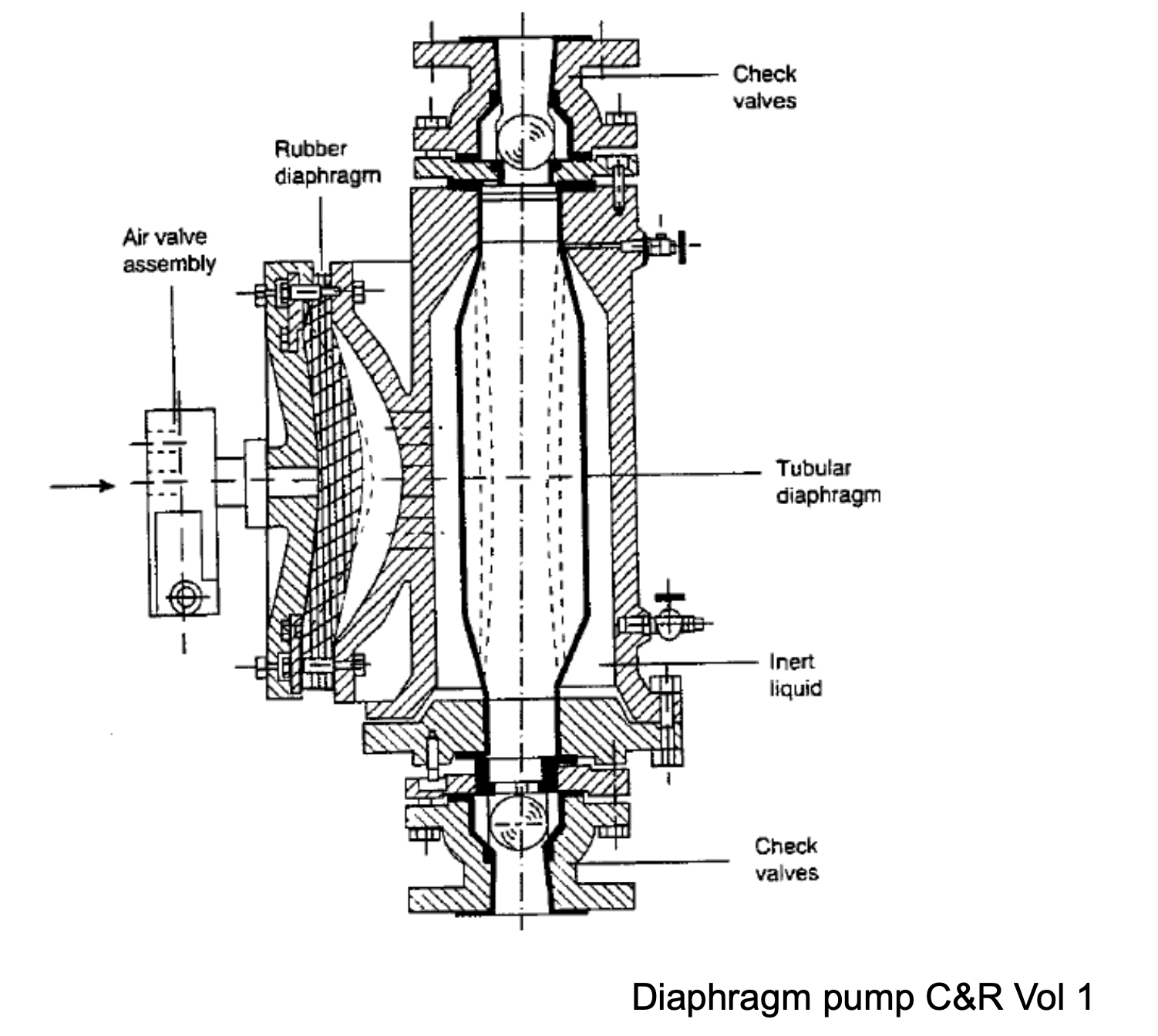
Rotary pumps
Liquid displaced by rotating gear or screw.
No valves → more even flowrate than reciprocating pumps
Low-medium vol. flows, with high pump head
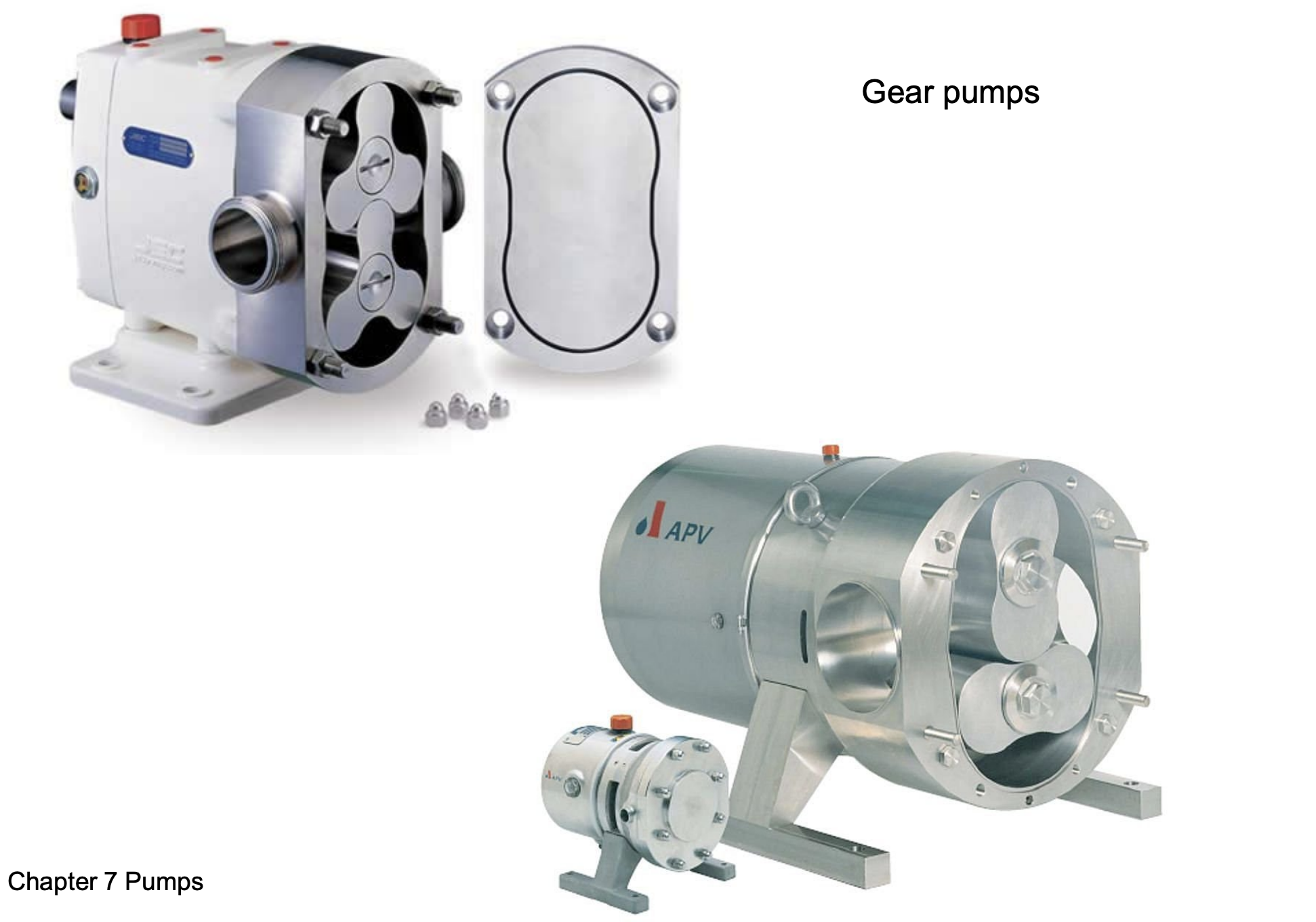
Mono pump
Handles corrosive and gritty liquids e.g. slurry
Pumps against high pressure
Rotating helical cavity
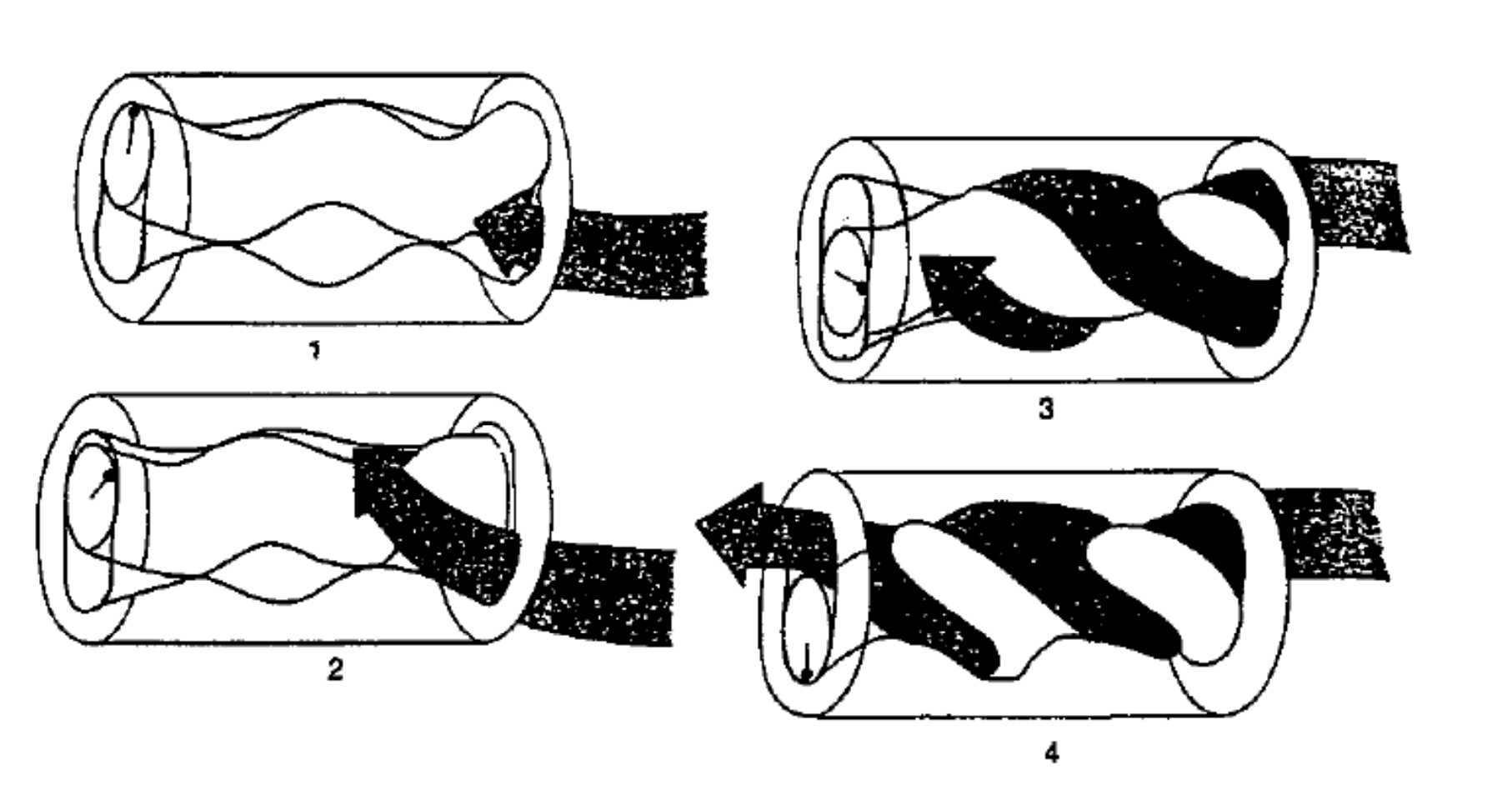
Screw pump
High viscous material
Screw revolves in a barrel
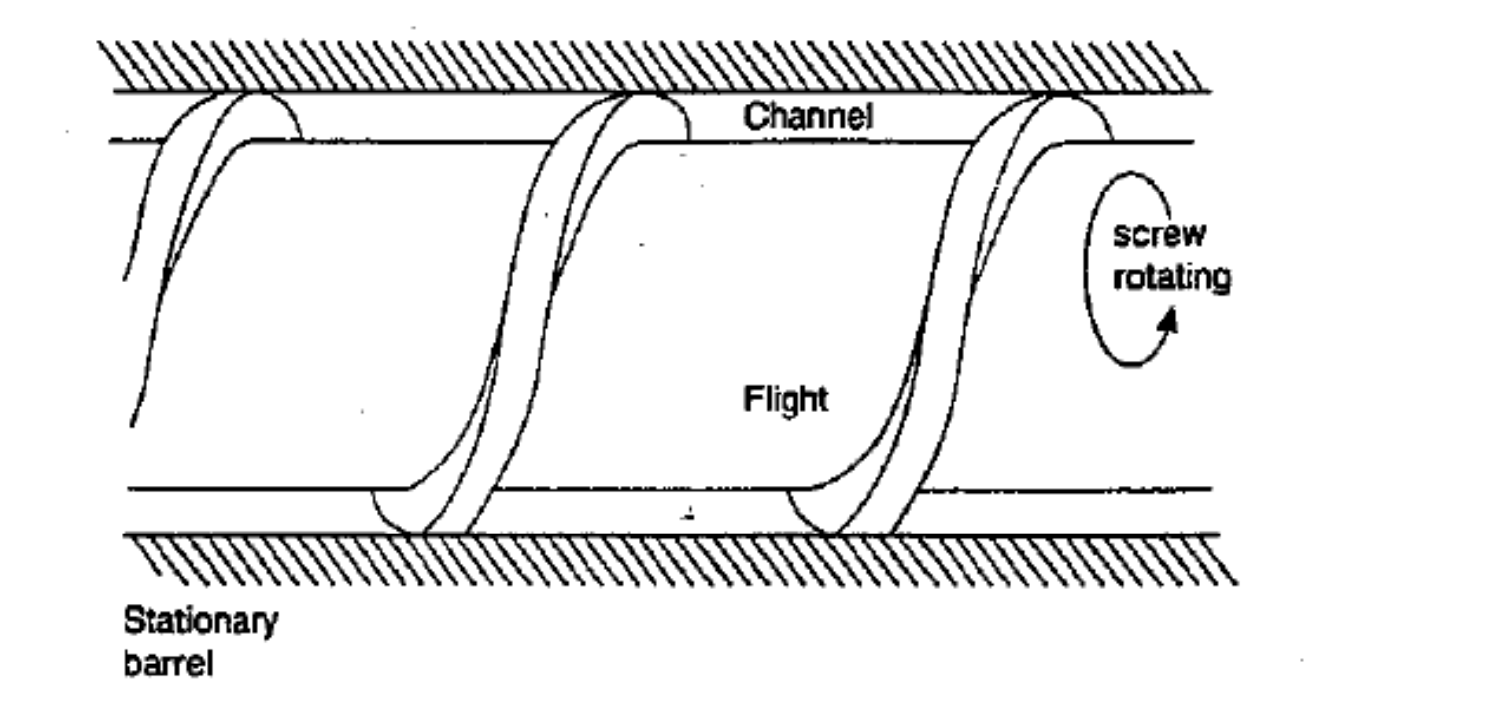
Branches off main pipe for clean fluids
Top, side, bottom
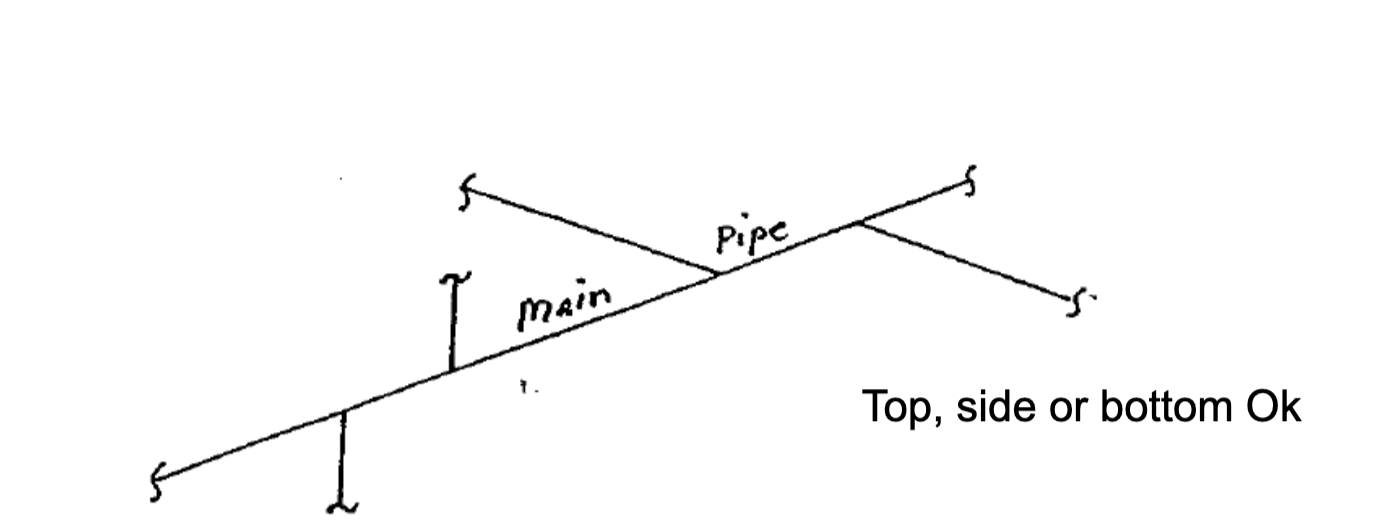
Branches off main pipe for dirty fluids
Top, side
Bottom not allowed because of solids settling

Clean liquids with gas bubbles
Side, bottom
Top to vent gas only

Steam out of main pipe
Top ok
Bottom only to drain condensate

Steam into main pipe
Top and side.
Bottom not ok because condensate will travel backwards

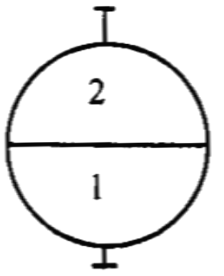
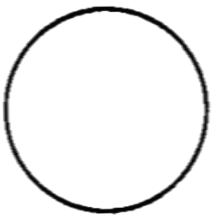
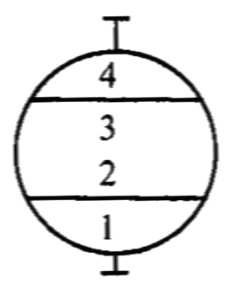
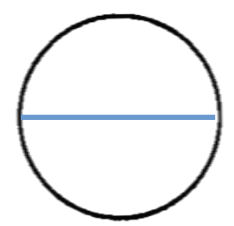

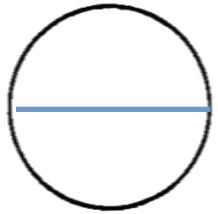
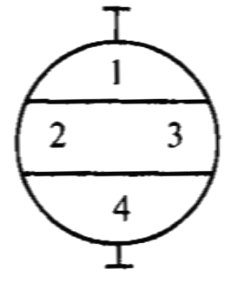
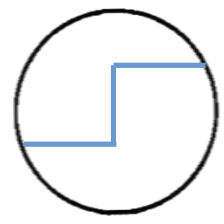
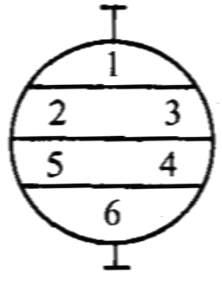

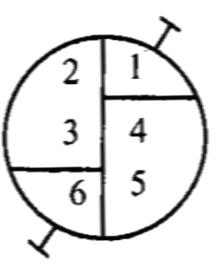

Close down valves
E.g. globe valve
Manual valve
Disc pushed into place to control circular orifice
Great for flow rate control

Slide valves
e.g. gate valve
Manual valve
vertical closure slides down and blocks path of flow
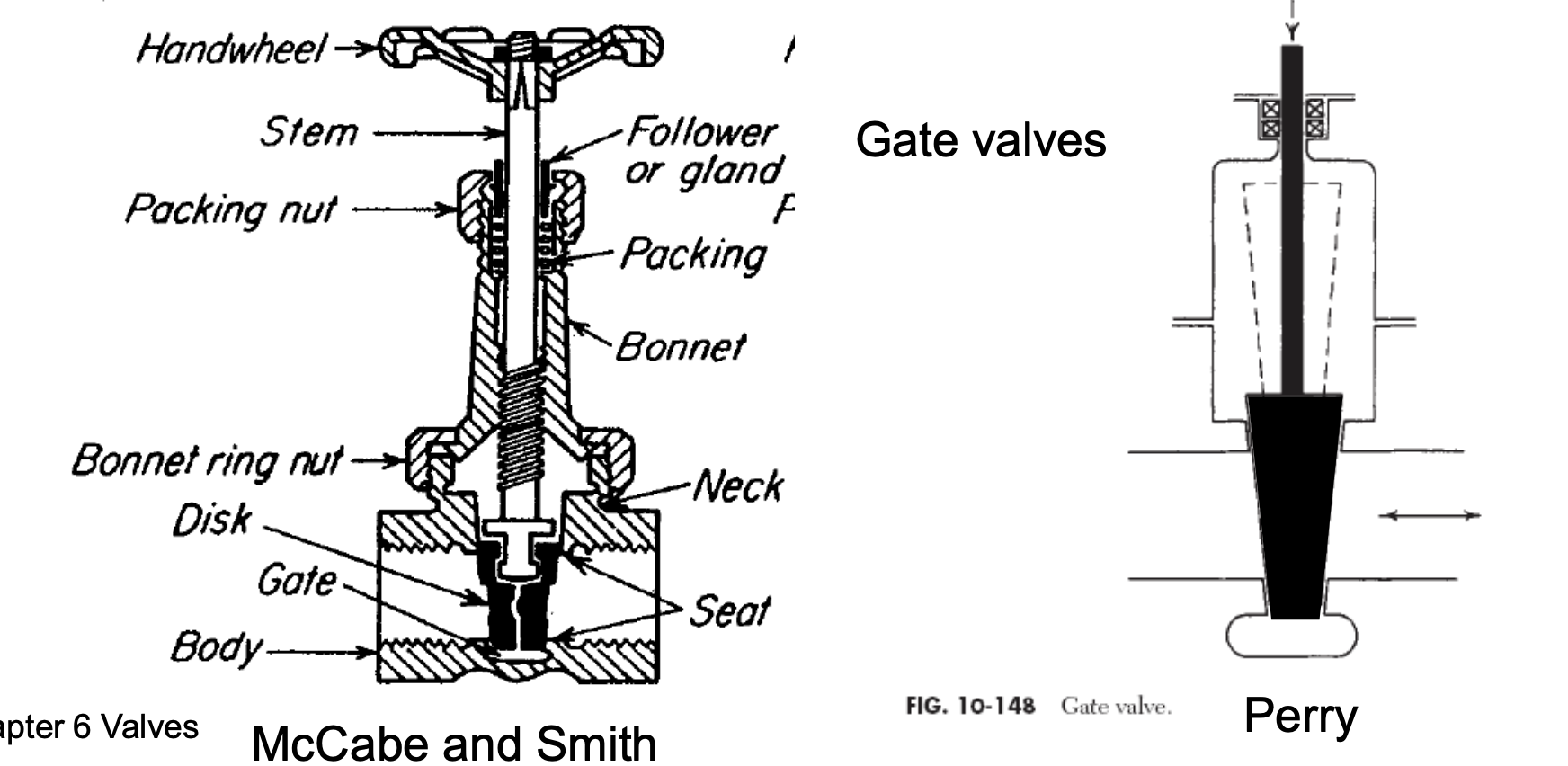
Rotary valves
e.g. ball valves, butterfly valves
Manual valve
A closure member / plug rotates to create an opening. In the case of ball valves this can be a piece with an orifice or it can be a plate in the case of butterfly valves
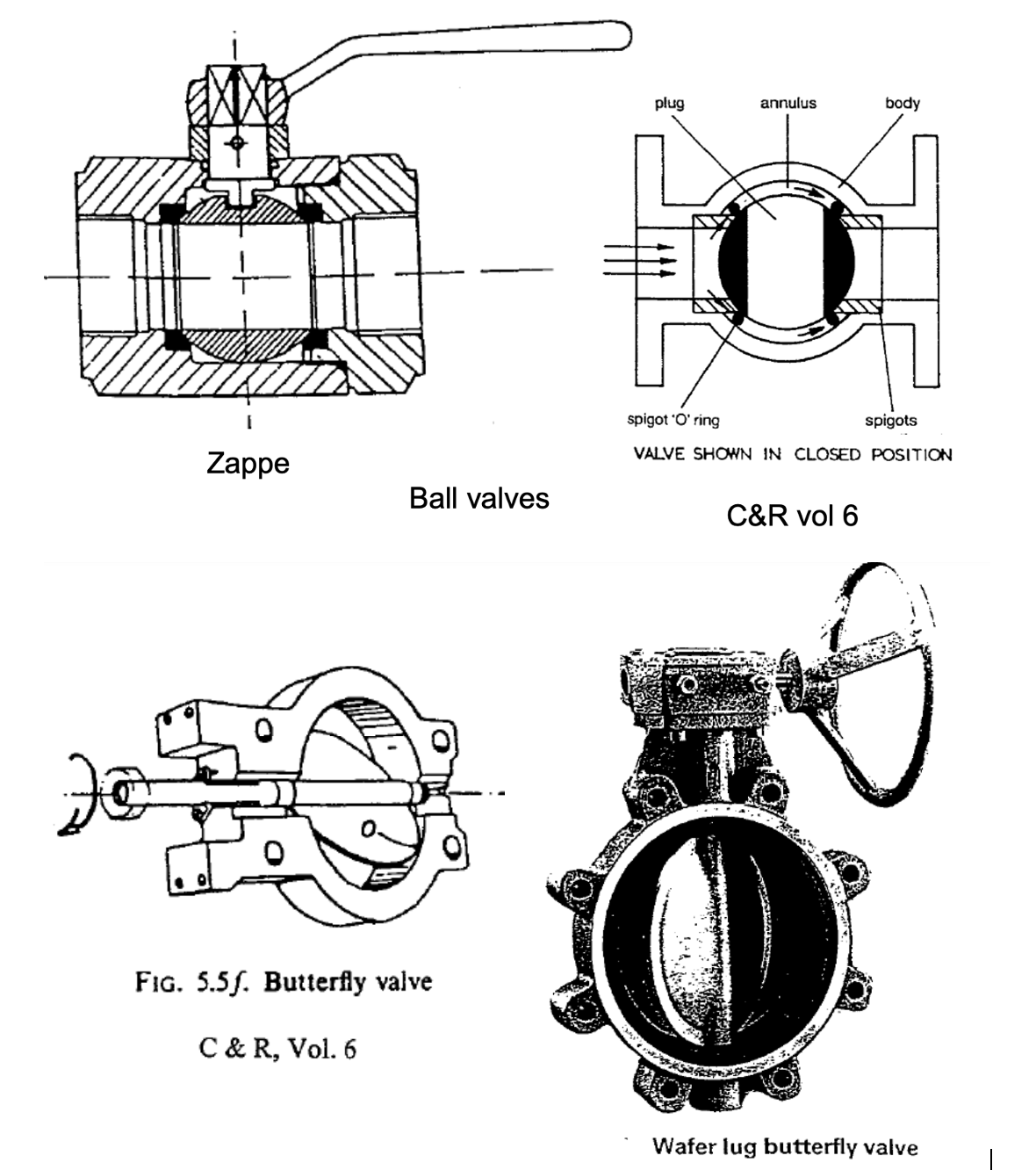
Flex-body valves
e.g. diaphragm valves, pinch valves
Manual valve
Used to handle abrasive, sticky solids
Used in food and pharma processing
Useful for flow control

Lift check valves
Check valve
Valve which opens for forward flow, closes for reverse flow
NOT FOR SAFETY APPLICATIONS
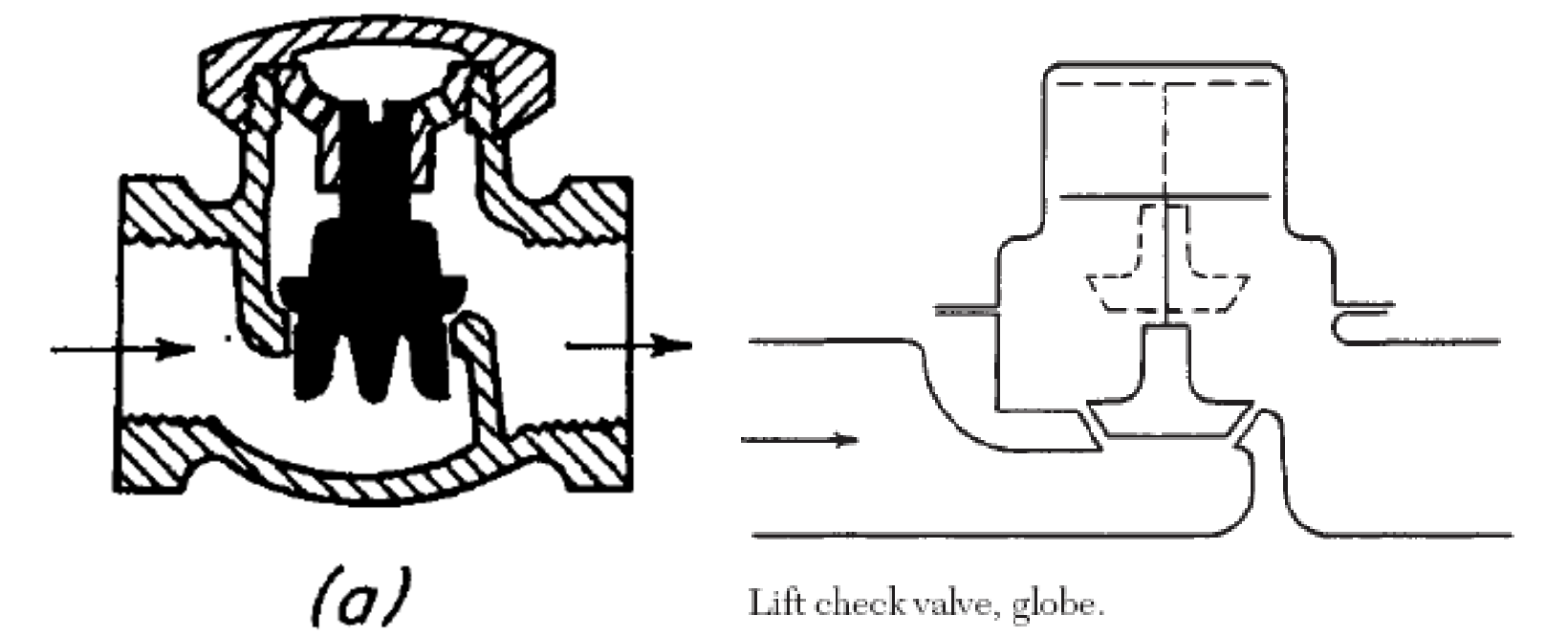
Ball check valve
Check valve
Valve which opens for forward flow, closes for reverse flow
NOT FOR SAFETY APPLICATIONS
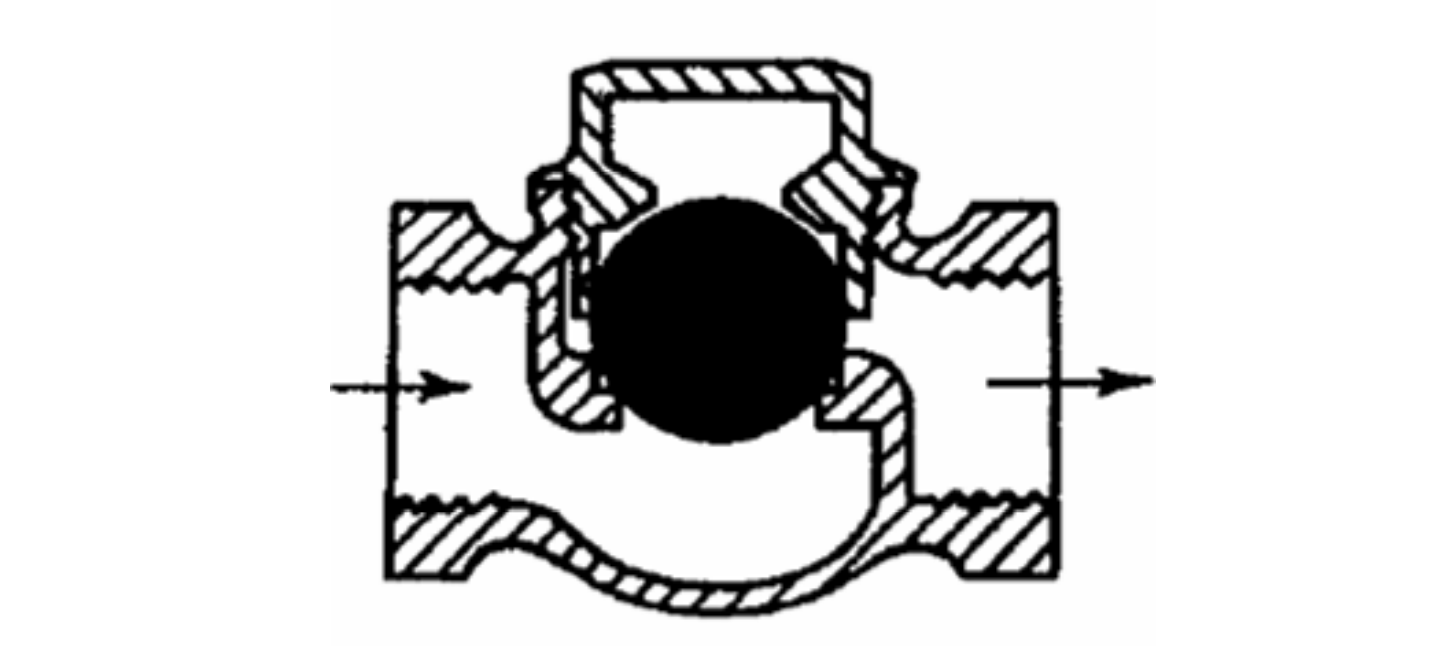
Swing check valve
Check valve
Valve which opens for forward flow, closes for reverse flow
NOT FOR SAFETY APPLICATIONS

Diaphagm check valve
Check valve
Valve which opens for forward flow, closes for reverse flow
NOT FOR SAFETY APPLICATIONS

Spring Operated Relief Valve
Set pressure adjusted by spring tension. Shuts off when vessel pressure reduces. May shut off early due to back pressure.
Some leakage
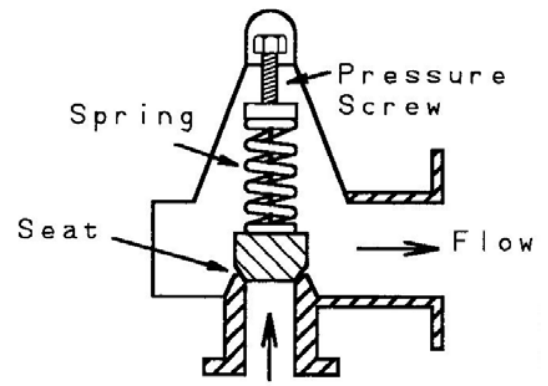
Balanced Bellows Spring Relief valve
Bellows means back pressure does not force the valve shut.
Some leakage

Bursting disc/rupture disc
Thin sheet of metal designed to break at certain pressure. Will not leak, must be replaced after being “blown”
